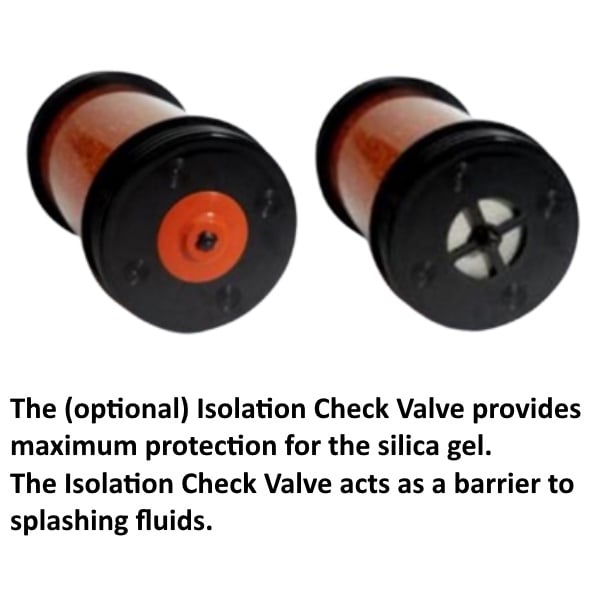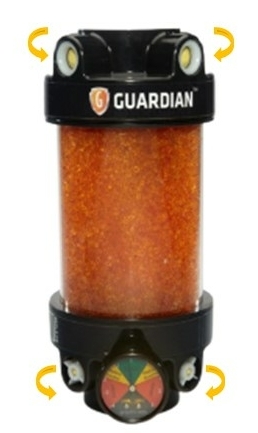What Is Check Valve Technology? | Lubripedia
Check valve technology refers to the use of one-way valves (also called non-return or isolation valves) in fluid or gas systems, allowing flow in one direction and preventing reverse flow. In lubrication, sealing, and breather systems, check valves play a crucial role in protecting equipment from contamination ingress and cross-contamination.
How Check Valve Technology Works:
A check valve is typically placed so that fluid or air can leave a system or container, but cannot return. When internal pressure drops or a vacuum would otherwise draw in external fluid, the valve closes, sealing the system. In the context of isolation breather systems, the check valve is integrated with the breather so that:
- Clean air can escape when internal pressure rises (venting)
- The valve closes when external pressure or contaminants attempt to enter
- Contaminants, moisture, or particulates are blocked from entering the protected system
Because the valve prevents backflow or inward movement, it isolates the internal fluid from external environment when required.
Key Features of Isolation Check Valve Breathers:
Breathers that include check valve technology (sometimes called isolation check valve breathers) combine standard breather functions (filtering incoming air) with the one-way isolation capability. Their key features include:
- Cross-contamination prevention: They prevent external fluids or gases from flowing back into the system, which helps maintain fluid purity and system integrity.
- Enhanced protection: Because they isolate the internal environment when needed, these breathers provide an extra layer of protection beyond simple filtration.
- Extended service intervals: Reducing contamination ingress helps prolong maintenance intervals, reducing downtime and operational cost.
- Versatile applications: Used in many industries (power generation, oil & gas, manufacturing) where maintaining fluid cleanliness is critical.
- Customisable materials and sizes: They can be tailored to specific fluids, operating conditions, and system geometry.

Why Check Valve Technology Matters in Lubrication and Sealing:
- It protects sensitive equipment (gearboxes, hydraulic reservoirs, bearings) from contamination ingress when the system is not under positive pressure.
- It helps maintain cleanliness levels, which is key to extending component life and minimising wear or failure.
- It prevents backflow of fluids or gases, which can dilute, degrade, or degrade the internal lubricant or process fluid.
- It contributes to safety and reliability, especially in environments where contamination or cross-contamination could cause serious damage or risk.
Applications:
Check valve technology in breather or isolation systems is used in:
- Gearboxes, bearing housings, and lubrication tanks
- Hydraulic fluid and oil reservoirs
- Industrial machinery needing contamination control
- Systems where cross-contamination is a risk (e.g. multiple fluid systems)
- Any fluid or gas system requiring one-way flow control for protection

